Related Research Articles
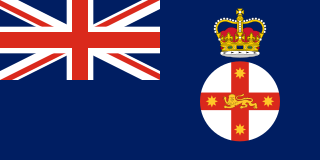
The Governor of New South Wales is the viceregal representative of the Australian monarch, Queen Elizabeth II, in the state of New South Wales. In an analogous way to the Governor-General of Australia at the national level, the Governors of the Australian states perform constitutional and ceremonial functions at the state level. The governor is appointed by the queen on the advice of the premier of New South Wales, for an unfixed period of time—known as serving At Her Majesty's pleasure—though five years is the norm. The current governor is retired judge Margaret Beazley, who succeeded David Hurley on 2 May 2019.

The Gambia, officially the Republic of The Gambia, is a country in Western Africa. The Gambia is often referred to as 'The Smiling Coast'. It is the smallest country within mainland Africa, and is surrounded by Senegal, except for its western coast on the Atlantic Ocean. The Gambia is situated on both sides of the lower reaches of the Gambia River, the nation's namesake, which flows through the centre of The Gambia and empties into the Atlantic Ocean. It has an area of 10,689 square kilometres (4,127 sq mi) with a population of 1,857,181 as of the April 2013 census. Banjul is the Gambian capital and the largest cities are Serekunda and Brikama.
The first written records of the region come from Arab traders in the 9th and 10th centuries. In medieval times, the region was dominated by the Trans-Saharan trade and was ruled by the Mali Empire. In the 16th century, the region came to be ruled by the Songhai Empire. The first Europeans to visit the Gambia River were the Portuguese in the 15th century, who attempted to settle on the river banks, but no settlement of significant size was established. Descendants of the Portuguese settlers remained until the 18th century. In the late 16th century, English merchants attempted to begin a trade with the Gambia, reporting that it was "a river of secret trade and riches concealed by the Portuguese."

The Governor-General of the Irish Free State was the official representative of the sovereign of the Irish Free State from 1922 to 1936. By convention, the office was largely ceremonial. Nonetheless, it was controversial, as many Irish Nationalists regarded the existence of the office as offensive to republican principles and a symbol of continued British involvement in Irish affairs, despite the Governor-General having no connection to the British Government after 1931. For this reason, the office's role was diminished over time by the Irish Government.
Government House is the name of many of the residences of governors-general, governors and lieutenant-governors in the Commonwealth and the remaining colonies of the British Empire. The name is also used in some other countries. It generally serves as an official residence and a venue for the governor's official business, as well as for the various receptions and functions hosted by the office

Yahya Abdul-Aziz Jemus Junkung Jammeh is a Gambian politician and former military officer who was the leader of The Gambia from 1994 to 2017, firstly as chairman of the Armed Forces Provisional Ruling Council (AFPRC) from 1994 to 1996 and then as President of the Gambia from 1996 to 2017.

The Parliament of the Democratic Socialist Republic of Sri Lanka is the supreme legislative body of Sri Lanka. It alone possesses legislative supremacy and thereby ultimate power over all other political bodies in the island. It is modeled after the British Parliament.
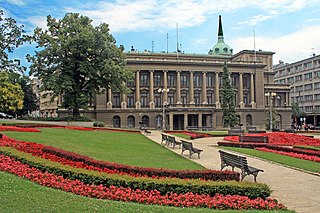
An official residence is the residence at which a nation's head of state, head of government, governor, religious leader, leaders of international organizations, or other senior figure officially resides. It may or may not be the same location where the individual conducts work-related functions or lives.
A Government House is any residence used by Governors-General, Governors and Lieutenant-Governors in the Commonwealth and the British Empire. Government Houses serve as the venue for Governors’ official business, as well as the many receptions and functions hosted by the occupant. Sometimes, the term Government House is used as a metonym for the Governor or his office.
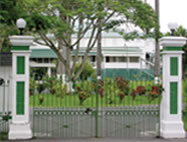
State House located in Georgetown, is the official residence of the president of Guyana. It was previously the official residence of the Governor of British Guiana before the colony gained independence and became Guyana.

The State House, located in Roseau, is the official residence of the President of Dominica. Previously it was used as the official residence of the colonial governors of Dominica.

State House is the official residence of the President of Kenya. It was the residence of the Prime Minister of Kenya from independence until Kenya transformed into a republic. As the Prime Minister's position was abolished, it has been the official residence of the president since then.
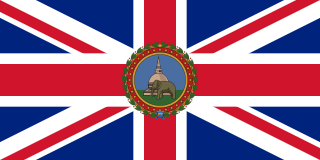
The Governor of Ceylon was the representative in Ceylon of the British Crown from 1795 to 1948. In this capacity, the governor was president of the Executive Council and Commander-in-Chief of the British Forces in Ceylon. The governor was the head of the British colonial administration in Ceylon, reporting to the Colonial Office.
The following table indicates the parties of elected officials in the U.S. state of South Carolina:
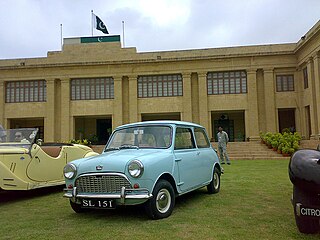
The Governor's House in Karachi, Sindh, Pakistan is the official residence of the Governor of Sindh. The current Governor of Sindh is Imran Ismail. It is located along the Aiwan-e-Sadar Road of Karachi.

Between 1965 and 1970, The Gambia was an independent sovereign state that shared its head of state with the United Kingdom and other states headed by Queen Elizabeth II. It was a predecessor to the modern-day republic of The Gambia.
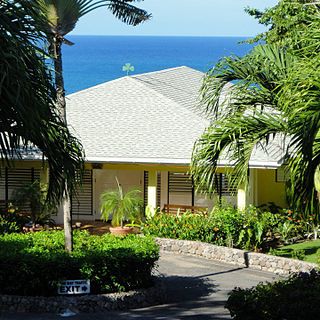
Government House is the official residence of the Governor of Montserrat, located in Woodlands in Montserrat.

The Gambia Colony and Protectorate was the British colonial administration of the Gambia from 1821 to 1965, part of the British Empire in the New Imperialism era. The colony was the immediate area surrounding Bathurst, and the protectorate was the inland territory situated around the Gambia River, which was declared in 1894. The foundation of the colony was Fort James and Bathurst, where British presence was established in 1815 and 1816, respectively. For various periods in its existence it was subordinate to the Sierra Leone Colony, however by 1888 it was a colony in its own right with a permanently appointed Governor.
References
- ↑ , Daily Observer, July 28, 2010
| This Gambia-related article is a stub. You can help Wikipedia by expanding it. |